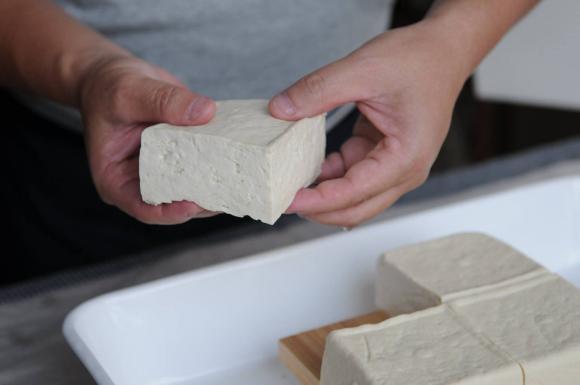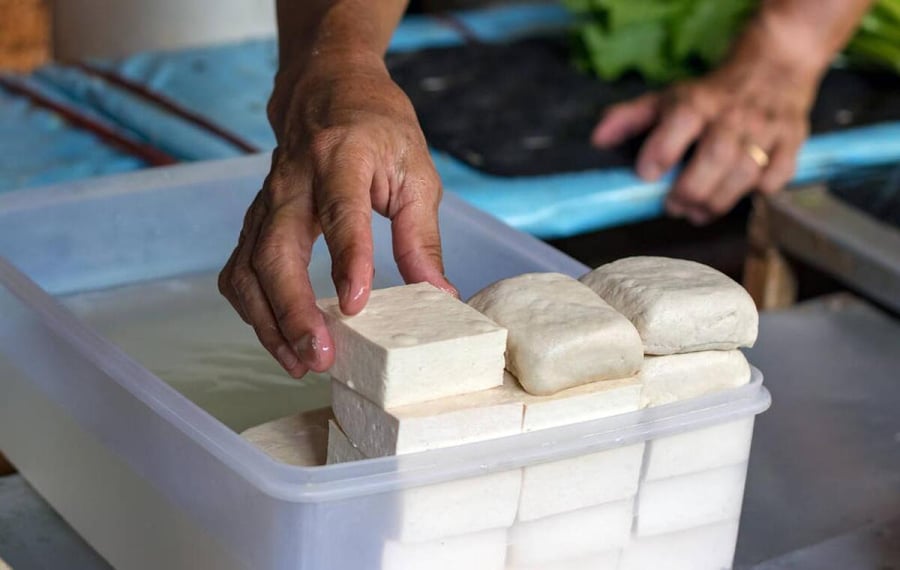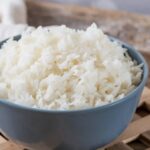It’s Not Your Average Tofu: Discover the Unique Characteristics of Each Slice
Tofu is more than just a plain white block. The process of cutting tofu into smaller pieces from a large mold creates a variety of textures and characteristics, depending on their position in the mold. The “edge” pieces, which are those that were on the periphery of the mold, tend to be firmer, drier, and less watery due to increased exposure to air and the mold’s surface. These traits make them ideal for frying, stewing, or braising as they hold their shape well and take on a delightful aroma. On the other hand, the “middle” pieces, nestled deep within the tofu block, retain more moisture, resulting in a softer, smoother, and richer texture. They are perfect for absorbing flavors in soups or hot pots without easily falling apart.
Edge Pieces: Firm and Robust
The edge pieces, with their distinct characteristics, are ideal for creating aesthetically pleasing dishes. When frying tofu, the edge pieces will give you that desirable crispiness, and when stewed in fish sauce, they will maintain their shape beautifully. The increased exposure to air and the mold’s surface during the tofu-making process results in a firmer texture and a more intense flavor for these pieces.

Middle Pieces: Soft and Creamy
In contrast to the edge pieces, the middle pieces offer a softer, smoother, and richer experience. Their position in the center of the tofu block means less exposure to air, resulting in a higher moisture retention. This makes them perfect for dishes like tomato sauce tofu or tofu soup, as they easily absorb the flavors while maintaining their soft texture. Despite their softness, they are surprisingly resilient if handled with care.

Which One Is the “Right” Choice?
There is no absolute right or wrong answer when it comes to choosing your tofu. It all depends on the dish you’re preparing. For dishes that require a firmer texture, like frying, stewing, or braising, go for the edge pieces. If you’re making soup, hot pot, or want a softer, richer texture, the middle pieces are your best bet. Some home cooks even buy both types to use in different dishes, ensuring that each meal is perfectly tailored to their needs.
5 Tips for Choosing Fresh and Safe Tofu
Whether you’re team edge or team middle, fresh and safe tofu is a must. Keep these five rules in mind when making your purchase:
Color
Opt for tofu with a natural ivory white color. Avoid tofu that is unusually stark white (may indicate the use of bleaching agents) or has a deep yellow hue (could be a sign of aging).
Aroma
Freshly made tofu should have a subtle aroma of soybeans. If you detect a sour, pungent, or strange smell, it’s best to steer clear as it may be spoiled or contain additives.
Texture
Gently press the tofu with your finger. Good-quality tofu will have a slight bounce-back resilience without crumbling or being overly soft.
Soaking Water
If the tofu is sold immersed in water, make sure the water is clear and clean. Avoid trays with foamy, cloudy, or slimy water as they may be a breeding ground for bacteria.
Vendor Hygiene
Purchase tofu from clean vendors who store it in separate containers with lids and regularly change the soaking water.

Expert Insight
According to PGS.TS Nguyen Duy Thinh, an expert from the Institute of Biotechnology and Food Technology at Hanoi University of Technology, tofu is susceptible to bacterial contamination if not properly stored. He advises consumers to buy from reputable sources and avoid untraceable products, especially during hot weather when the risk of spoilage is higher. Additionally, tofu that is excessively white or has an unusual aroma may contain unsafe additives. Being vigilant when choosing tofu is crucial for safeguarding your family’s health.
Conclusion: Choosing the Right Tofu Completes the Dish
Selecting the right tofu not only enhances the taste of your dishes but also saves you time in the kitchen. Whether it’s the edge or middle pieces, each has its unique role to play in your culinary creations. However, the most important factor is choosing fresh, clean, and safe tofu to protect your family’s health. The next time you go shopping, take a moment to observe and choose your tofu with care—because even the smallest details, like the right tofu slice, can make a big difference in the deliciousness of your meals and your love for your kitchen.






































